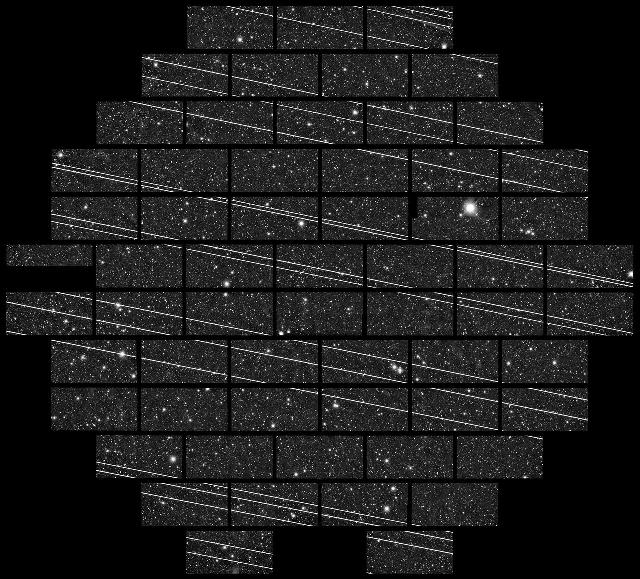The new series of SpaceX satellite constellation devices, which has the ability to communicate directly with most mass smartphones, turned out to be much brighter than the rest. The exact reasons for this have not yet been established — maybe it's because of lower orbits, a different landing gear configuration, or a different orientation of the satellites in space. In any case, Starlink will again have to take additional measures to reduce the level of light pollution in the night sky.
Any objects in low Earth orbit (LEO) interfere with astronomical observations. Sunlight can reflect off their surface and get into the lens of an optical telescope — then a bright stripe will appear on the image, blocking part of the field of view. Observations in the infrared part of the spectrum are also not protected from interference, and a communication satellite that gets into the "field of view" of a radio telescope easily clogs a sensitive antenna with noise.
Until recently, satellites were a relatively rare nuisance, so astronomers rarely paid attention to this problem. However, with the appearance in orbit of the first batches of "constellations" like OneWeb and Starlink, the situation has radically deteriorated .
The observation time has decreased without interference, and the number of defective "images" has increased. To analyze, control and develop proposals to solve the problem, the International Astronomical Union (IAU) has organized a special institute — the Center for the Protection of Dark and Calm Skies from the Influence of Satellite Groupings (CPS).
The organization has released a new study focused on the impact of Starlink satellites equipped with cellular communications equipment (Direct-To-Cell, DTC). Publication Space.com drew attention to the document and took comments from its authors.
The apparent magnitude of the DTC devices is approximately 4.62, which is almost five times brighter than the apparent magnitude of the Starlink V2 Mini launched over the past year and a half. Although there are still a minority of DTC satellites in the grouping (just over a hundred out of more than six thousand), their contribution to interference for astronomy risks becoming dominant. Especially considering the SpaceX application already approved by the US Federal Communications Commission for the operation of a total of 7,500 "space cell towers".
The authors of the study suggested several possible reasons for such an increased brightness of the Starlink DTC (or a combination of them):
- The increased total area of the devices compared to the Starlink V2 Mini due to the addition of a large antenna is 125 square meters versus 116;
- The lower orbit of the DTC spacecraft is 340-345 kilometers versus 530-560 kilometers;
- A different chassis configuration that does not allow for measures to reduce reflectivity;
- A different orientation in space, necessary for the operation of a cellular antenna.
Note that the low orbit largely compensates for the increased apparent magnitude of the satellites: they spend less time in the field of view of the observatories. But this does not eliminate the problem entirely.
Being the organization that most intensively fills LEO with man—made objects, SpaceX, the operator of the Starlink grouping, does not refuse to cooperate with astronomical associations. This was also noted by the authors of the new study.
After the launch of its constellation, when scientists first drew public attention to the problem of interference from observation satellites, SpaceX took a number of important measures. The apparent magnitude of the Starlink devices was reduced many times, and the antennas were turned off above the radio telescopes. It can be assumed that the company will take measures for DTC satellites, but its representatives have not yet made official statements on this matter.

